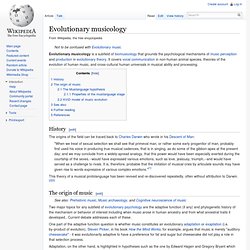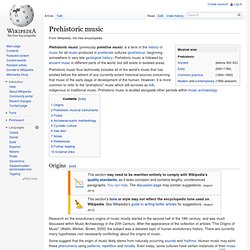

How Music Works. The Unanswered Question 1973 1 Musical Phonology Bernstein Norton. Love That New Single? Mathematical Equation Predicts Music’s Hits And Flops. Scientists have come up with an equation that can predict hit songs 60 percent of the time.

Does that mean machines will soon begin making their own chart-topping hits? Technology is continually getting better at predicting our behavior, and signaling to us that perhaps we’re not as unpredictable and free-willed as we humans like to think. Software can predict where crimes are going to happen, scanners can guess what products we like based on what we look like, and brain scanners can eavesdrop on our inner dialogue just by reading our brain activity. One could plausibly argue that the aspect of human nature least likely to be called formulaic is artistic creation, such as making music.
Researchers at the University of Bristol, however, want to turn our inspired musical notes into cold, calculated plusses and minuses. The equation, dubbed the “Hit Potential Equation,” seeks to break down songs into their component parts and then identify the components most important to hit potential. Musicians Wage War Against Evil Robots. Reader Ken Palmer pointed out an interesting Smithsonian article about how emerging technology was thought of as a threat to musicians’ livelihood – way back in the 1930s!

“I remember when it was argued that synthesizers and samplers were going to put many musicians out of work,” notes Palmer. But this alarmist view of technology in music goes way back to the early 20th century. Joseph N. Weber, the president of the American Federation of Musicians, made it clear in the March, 1931 issue of Modern Mechanix magazine that the very soul of art was at stake in this battle against the machines: The time is coming fast when the only living thing around a motion picture house will be the person who sells you your ticket.
Canned drama, canned music, canned vaudeville. We are not even opposing mechanical music except where it is used as a profiteering instrument for artistic debasement. That debasement came in the form of the evil robot grinding up instruments in a meat grinder, above right. Evolutionary musicology. History[edit] The origins of the field can be traced back to Charles Darwin who wrote in his Descent of Man: "When we treat of sexual selection we shall see that primeval man, or rather some early progenitor of man, probably first used his voice in producing true musical cadences, that is in singing, as do some of the gibbon-apes at the present day; and we may conclude from a widely-spread analogy, that this power would have been especially exerted during the courtship of the sexes,--would have expressed various emotions, such as love, jealousy, triumph,--and would have served as a challenge to rivals.

It is, therefore, probable that the imitation of musical cries by articulate sounds may have given rise to words expressive of various complex emotions. "[1] This theory of a musical protolanguage has been revived and re-discovered repeatedly, often without attribution to Darwin.[2][3] Evolution of Music. In today's Telegraph, I pose the question is there too much music?

At the root of this is a much bigger and more profound question: what is music for? Is it just entertainment or does it have a more integral evolutionary purpose? It is a question that fascinates me. I have been involved with music (as a fan, musician and critic) my whole life and I wonder what underlies that? Prehistoric music. Prehistoric music (previously primitive music) is a term in the history of music for all music produced in preliterate cultures (prehistory), beginning somewhere in very late geological history.

Prehistoric music is followed by ancient music in different parts of the world, but still exists in isolated areas. Prehistoric music thus technically includes all of the world’s music that has existed before the advent of any currently-extant historical sources concerning that music of the early stage of development of the human. However, it is more common to refer to the "prehistoric" music which still survives as folk, indigenous or traditional music. Prehistoric music is studied alongside other periods within music archaeology.
Origins[edit] Human Hearing. The human ear is an exceedingly complex organ.

To make matters even more difficult, the information from two ears is combined in a perplexing neural network, the human brain. Keep in mind that the following is only a brief overview; there are many subtle effects and poorly understood phenomena related to human hearing. Figure 22-1 illustrates the major structures and processes that comprise the human ear. The outer ear is composed of two parts, the visible flap of skin and cartilage attached to the side of the head, and the ear canal, a tube about 0.5 cm in diameter extending about 3 cm into the head. These structures direct environmental sounds to the sensitive middle and inner ear organs located safely inside of the skull bones. When a sound wave tries to pass from air into liquid, only a small fraction of the sound is transmitted through the interface, while the remainder of the energy is reflected.
Table 22-1 shows the relationship between sound intensity and perceived loudness.